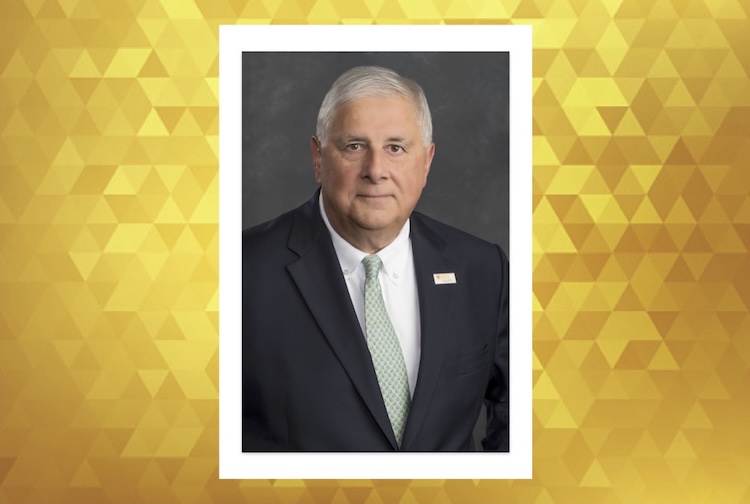
Beyond Dry January: Addressing the health impacts of alcohol consumption
As more patients seek treatment for alcohol-related illnesses, health experts discuss findings that “no level of alcohol consumption is safe for our health.”
February 19, 2024 VCU School of Medicine and VCU Health experts note the importance of approaching patients with compassion when trying to address treatment options, especially in situations where there may experience a recurrence of alcohol use. (Adobe Stock)
VCU School of Medicine and VCU Health experts note the importance of approaching patients with compassion when trying to address treatment options, especially in situations where there may experience a recurrence of alcohol use. (Adobe Stock)
By Grace McOmber
At the beginning of this year, approximately 21% of drinking-age adults in the United States reported they were committed to observing “Dry January” by abstaining from alcohol for 31 days.
But now that January is behind us, health experts continue to urge people to cut down and monitor their drinking habits. Even light to moderate amounts of alcohol consumption — 1.2 drinks to 2.2 drinks per day, according to the National Institutes of Health — has been linked to an increased risk for health issues like liver disease, certain cancers and alcohol use disorders. In 2023, the World Health Organization
cautioned even further, stating that there is no healthy amount of alcohol consumption.
Two Virginia Commonwealth University School of Medicine faculty who regularly see alcohol-related illnesses in their clinics reflected on the latest findings and how they advise patients to balance alcohol consumption with overall health.
Changing our mindset around drinking
As a central nervous system depressant that affects the cerebral cortex, alcohol impairs inhibition control and information processing. Albert Arias, M.D., a VCU Health psychiatrist who specializes in addiction medicine, associate professor in the VCU School of Medicine’s Department of Psychiatry and investigator at VCU’s Institute for Drug and Alcohol Studies, explained that frequently exceeding the recommended daily and weekly limits for alcohol intake can alter neural pathways over time, increasing the risk of developing alcohol use disorder and other negative psychosocial consequences.
“You don’t have to be getting drunk all the time for drinking to be problematic,” Arias said. “Alcohol can change the brain in subtle ways over time and generate an addicted state.”
The recent changes in government recommendations lowering the limits for “safe” or nonharmful drinking are based on a growing body of research linking any levels of alcohol intake to medical problems over time, like increased risks of cancer, stroke and heart disease.
“Alcohol appears to affect the body in harmful ways even at low levels of intake, and we didn’t always think that,” Arias said.
A major challenge for people wanting to cut down on alcohol consumption is its current widespread availability and cultural relevance. Arias noted that people often drink to cope with stress, anxiety or in social settings, and finding activities and outlets that displace the urge to drink can be useful in reducing alcohol consumption.
“There are behaviors that you can change to cut down on drinking,” Arias said. “Instead of going to a bar, you can work out or do other activities to fill that time.”
Arias says that despite the scientific evidence that no amount of alcohol is healthy, he doesn’t expect to see an immediate change in drinking culture and habits. He speculates that it will take time for recent findings to “really sink in” on a societal level but hopes there will eventually be a cultural shift around alcohol consumption.
“If we think about smoking, it’s still a huge issue that kills even more people per year than alcohol, but it has become less prevalent and acceptable within society,” Arias said. “We’ll probably see something similar with alcohol over time. The biggest thing is for people who don’t drink to avoid starting.”
Physical ramifications to alcohol consumption
One of the biggest challenges for researchers and clinicians alike is determining who is predisposed to alcohol-induced diseases. Alcohol consumption impacts patients differently, and many of the genetic determinants remain a mystery.
“You could have three different individuals who all consume the same amount of alcohol per day for 15 years and they could each have different outcomes, ranging from no health issues to alcohol induced cirrhosis and needing a liver transplant,” said Amon Asgharpour, M.D., a professor in the Department of Internal Medicine. “That’s the kind of variability we see, and we don’t entirely know why yet.”
Asgharpour says he has witnessed an alarming trend in patients he treats as a transplant hepatologist at VCU’s Sanyal-Stravitz Institute for Liver Disease and Metabolic Health. Alcohol-induced hepatitis, which is inflammation of the liver that can cause serious organ damage, is becoming more prevalent among patients in their 20s and 30s — two decades ago, he says, specialists only saw the disease in 50 and 60-year-olds.
Asgharpour’s observations align with what the American Gastroenterological Association calls a “concerning increase” in alcohol-related liver disease in 25 to 34-year-olds over the past 20 years. Over time, alcohol damages and kills healthy liver cells as it is filtered through the organ, leading to diseases like alcoholic hepatitis, steatosis (also known as fatty liver disease) and cirrhosis, when scarring on the liver becomes irreversible, necessitating a transplant.
The good news, Asgharpour says, is that the liver is a “remarkably hearty and regenerative organ.” Steatosis can develop after only two weeks of heavy alcohol use, according to the NIH, but abstaining from alcohol for two to three weeks can reverse the disease in its early stage.
“With the liver, you can reverse scarring,” Asgharpour said. “It’s a matter of removing the underlying cause of that scarring, whether that be a virus or alcohol. The liver is a very forgiving organ.”
While any amount of alcohol consumption damages the liver, Asgharpour says that being aware of and following the NIH guidelines when choosing to drink is an important step people can take to protect their health. He emphasized that clinicians should approach treatment with compassion and without judgment, especially with patients who may experience a recurrence of alcohol use.
“I tell my patients to ‘avoid alcohol,’ rather than saying ‘don’t drink,’” Asgharpour said. “Maintaining that trust is important, especially when you’re meeting someone seeking help for the first time.”



